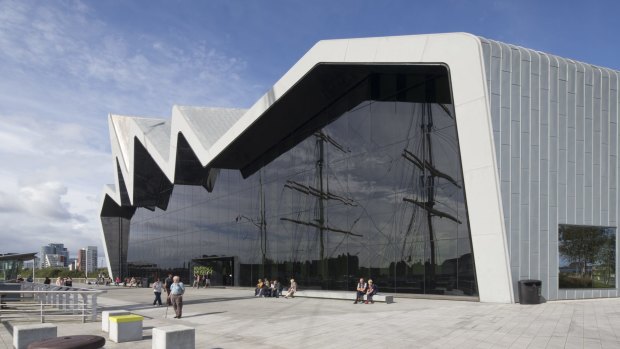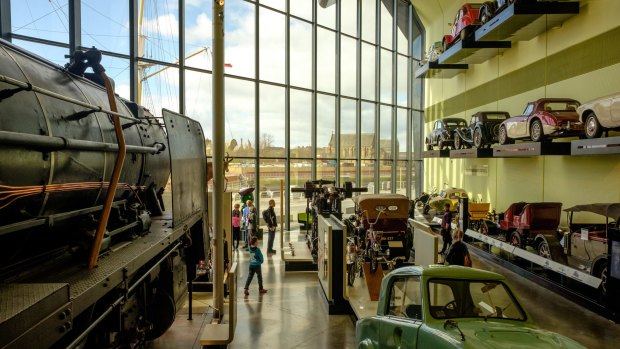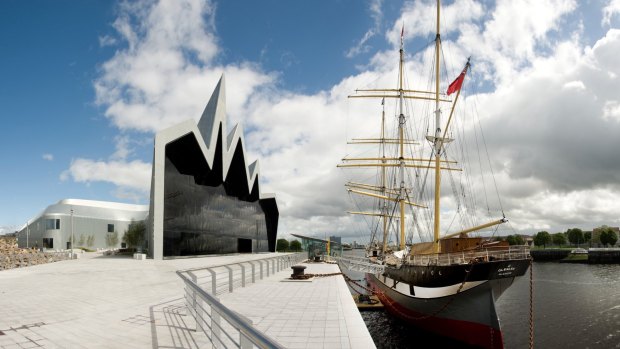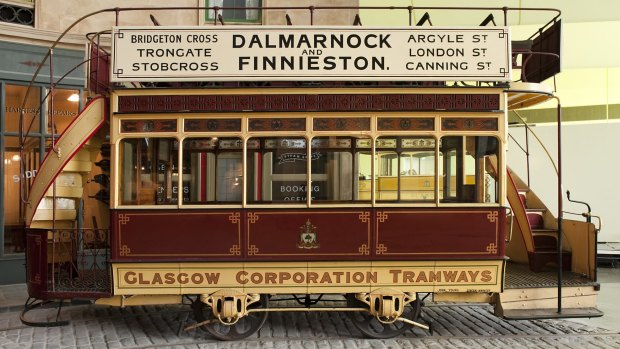This was published 5 years ago
Glasgow, Scotland: Riverside Museum home to one of the world's oldest subway
By Katrina Lobley

The Riverside Museum was formally the Transport Museum in Glasgow.
Glasgow, that tough nut of a town, is home to one of the world's dinkiest subway systems. "It's known as clockwork orange," laughs Gary White, general manager of Native Glasgow, an apartment hotel in the heart of Scotland's largest city.
Inspect the subway map and the reason for the nickname is clear. Instead of resembling a spider's web, Glasgow's subway comprises simple twin circular loops: one orange and one grey. The orange outer circle travels clockwise; the grey loop is the anti-clockwise inner circle. Either way, it takes only 24 minutes to complete the 10.5 kilometre circuit of 15 stations connected via narrow-gauge tracks.
The world's third-oldest underground metro system opened in 1896, only London and Budapest have older undergrounds. The trains originally used cable traction that gripped a moving cable but in 1935 electricity took over. I hop on at Buchanan Street station to reach the West End's Hillhead station near the church turned multi-room venue, Oran Mor.

Classic car collection in the Riverside Museum, Glasgow.Credit: Alamy
It feels like I should duck to enter the tubular carriage that seems to have careered off a toy train set. With the subway shutting at 11.40pm (except on Sundays when it's done by 6.12pm), I skedaddle back on to it around 11pm to head home. Further modernisation is on the way with the introduction of new rolling stock. These unattended trains, currently undergoing testing, come with a glass frontage that allows passengers to peer ahead into the tunnels.
You can learn more about the subway's evolution at the Riverside Museum, one of Glasgow's many free museums. Take the hop-on, hop-off bus that stops right outside the museum, four kilometres west of George Square. The late Pritzker Prize-winning architect, Zaha Hadid, created the landmark building's gleaming zigzag roofline to reflect the dynamism of the city that's bounced back from post-industrial decline to forge a more culture-focused future.
Inside, stroll along a re-creation of a Victorian-era main street that includes a white-tiled replica subway station. Here, you can poke around inside the yellow and maroon carriages that whisked passengers around the city from 1899 until 1977. The No Spitting signs inside the carriages weren't just about enforcing polite behaviour – Glasgow once had Europe's worst tuberculosis statistics (in 1910, TB killed more than 1000 residents). Spitting could kill people.

The Riverside Museum is one of Glasgow's many free museums.
Workers dug the subway tunnels by hand over five years, burrowing through sand, clay, bedrock and mud, passing through old mine shafts and underneath the River Clyde twice. Dangers included the possibility of the river bursting the tunnels. When the network was complete, each station had a single wooden platform placed between the twin tracks; some stations even had glass ceilings for illumination.
Another subway display within the museum details how the door-less left side of the carriages' exterior were left unpainted because they couldn't be seen from the central platforms. A conductor's uniform, a formal double-breasted buttoned coat and cap trimmed with scarlet piping, was worn right up until 1974.
Other displays cover everything from cycle clubs to the skateboarding craze but, on a beautiful day, the tall ship docked outside on the river beckons. The Glenlee was built in 1896 as a cargo ship and spent 70 years as a training ship for the Spanish Navy. Today, it's a floating museum that represents Scotland's shipbuilding past.

A tram car from the 1980s.
Below deck you can discover oddities such as the heads (the sailors' toilet, so named because it was placed downwind at the bow or head of the sailing ship) and the hospital room where the ship's captain doubled as the doctor. If basic surgery was required, he could call upon the carpenter or sailmaker to do the honours. Life upon the high seas, it seems, was anything but plain sailing.
TRIP NOTES
Katrina Lobley was a guest of Glasgow Life.
MORE
FLY
Emirates flies from six major Australian cities to Glasgow via Dubai. See emirates.com
VISIT
Riverside Museum showcases more than 3000 transport-related objects. Open daily till 5pm, free. The hop-on, hop-off bus stops outside the museum. See glasgowlife.org.uk/museums/venues/riverside-museum; citysightseeingglasgow.co.uk
STAY
The 64-apartment hotel Native Glasgow, located within the Anchor Line Shipping Company's former headquarters, is near George Square. Serviced apartments start from £80 a night. See nativeplaces.com
Sign up for the Traveller Deals newsletter
Get exclusive travel deals delivered straight to your inbox. Sign up now.